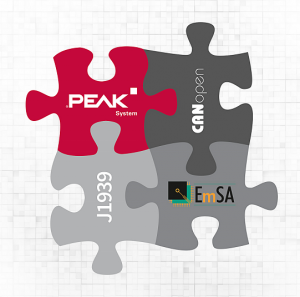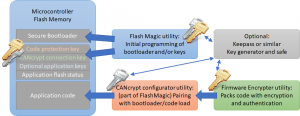PEAK and EmSA extend partnership on CANopen (FD) and J1939 solutions
Darmstadt and Hannover, June 12th, 2019. PEAK-System Technik GmbH (www.peak-system.com) and Embedded Systems Academy GmbH (www.esacademy.de) have deepened their partnership to provide common CANopen, CANopen FD, and J1939 solutions. For more than 15 years, Embedded Systems Academy GmbH (EmSA) has offered numerous CANopen software products including monitors, analyzers, simulators, configurators, and protocol stacks for the CAN (Controller Area Network) hardware of PEAK-System Technik GmbH (PEAK). Building on that partnership, PEAK has now become a shareholder and partner of EmSA.
“By formally joining the PEAK Group of companies, we can now more easily share resources and are better positioned to streamline development processes that involve both CAN hardware and software,” says Olaf Pfeiffer, General Manager of Embedded Systems Academy GmbH.
Current projects of PEAK and EmSA include CANopen (FD) generic input and output devices, CANopen (FD) protocol libraries, security options for CAN and diagnostics and test systems for CANopen (FD) and J1939.
“The deepened partnership with EmSA will provide our hardware customers with a variety of easy-to-use software products for CANopen, CANopen FD, and J1939 applications,” says Uwe Wilhelm, General Manager of PEAK-System Technik GmbH. “We’ll announce our new joint CANopen and CANopen FD solutions on our websites and blogs over the coming months.”
 Deutsch
Deutsch English
English


 Learn about our current product range for embedded systems
Learn about our current product range for embedded systems


 Embedded Networking with CAN and CANopen. Your technology guide for implementing CANopen devices.
Embedded Networking with CAN and CANopen. Your technology guide for implementing CANopen devices. Implementing scalable CAN security. Authentication and encryption for higher layer protocols, CAN and CAN-FD
Implementing scalable CAN security. Authentication and encryption for higher layer protocols, CAN and CAN-FD